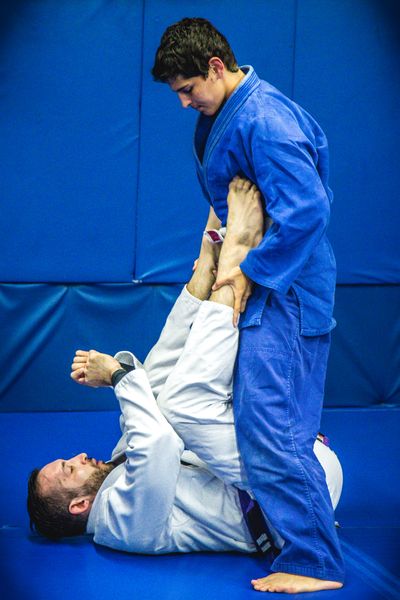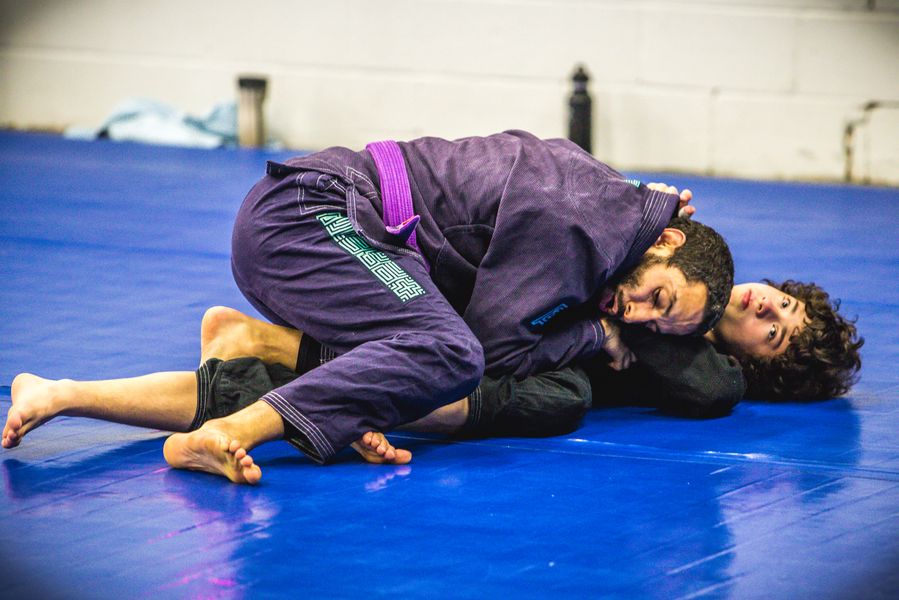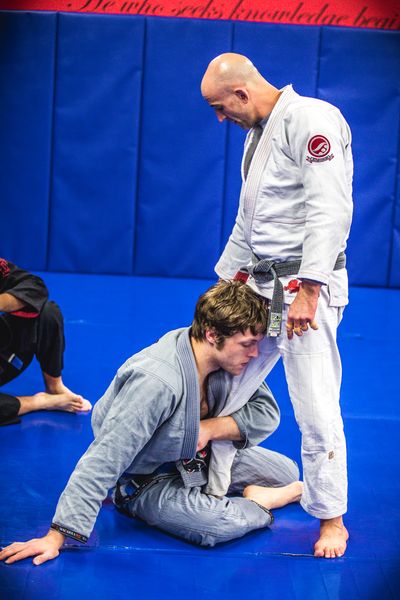On the importance of drilling
Brazilian Jiu-Jitsu is said to be the ultimate convergence of physical and mental prowess—human chess, some call it—but to be proficient at it, you need to move involuntarily. The first trace of conscious thought during a match is a precursor for your opponent’s hand being raised.
I’m not a chess player; the sum of chess games I’ve played in my life is likely under ten, but this is the most ostensible dissimilarity between Jiu-Jitsu and chess—one requires instinctive movement, and the other allows for pensive strategizing before acting.
This isn’t to imply that the cerebral aspect of Jiu-Jitsu is less noteworthy than chess; it’s just factored in differently. The time for active thought in Jiu-Jitsu isn’t during sparring, but drilling– the most over-looked, but also most important aspect of training. Earlier this summer, I was talking to my Professor, who had been implementing more drilling in class, much to my liking, but to some of my training partners’ displeasure. Some students at my academy wanted to roll more, because drilling seemed monotonous and less fun, my Professor told me.
I once espoused this outlook, too; the only moves that were efficient were the ones that you could immediately execute on a resisting opponent. Drilling on a compliant partner seemed to be a waste of time, as no opponent in a sparring or self-defense scenario would allow you to apply a choke or joint-lock without resistance. It also seemed boring and monotonous, robbing Jiu-Jitsu of its most fun aspect—sparring.
To those who still think this way, here are some of my rebuttals, and some ways that you can implement drilling in a way that’s enjoyable for you.
All The Top Athletes Drill
Yes, the majority of people walking through the door of a Jiu-Jitsu gym aren’t seeking to become the next Buchecha, Leandro Lo, Gordon Ryan, or Paulo Miyao, but a majority of people who train Jiu-Jitsu still get star struck when they see those four athletes—or any other top tier grappler—deftly execute a move that looks like it belongs in a Kung Fu movie. Most people, moreover, with their mouths agape, always wonder how they can emulate those motions—not to the same degree of mastery, but well enough to be able to say, “I can do that, too.”
The way you accomplish this is through thoughtful drilling with a partner who can be compliant enough to allow you work out a move’s finer details. You don’t even need to drill advanced movements; drilling basic armbar movement, triangle entries, and sweeps from closed guard will suffice; this leads to my next point…
Drill the Basics, and Make Sure You Don’t Feel Like You’re Going Fast
The Book of Five Rings is a brief pamphlet written by the most famous swordsman in Japanese history, Miyamoto Musashi. In the writing, he says that you need to make sure that, when drilling movements, to ensure you do so slowly and smoothly; if it feels like you’re going fast in drilling, you’re sacrificing quality of repetition for speed. If you drill slowly, however, your movement will hasten with proper drilling, and the motion will feel slow but be quick during sparring.
As to what you should drill, go with the basics. I do one hundred triangles every day. I started doing this a few months ago, and during sparring, I see entries to the triangle that I didn’t prior, including from inverted position, the back, everywhere. This same concept applies for every submission—the armbar, kimura, d’arce choke, etc.—the more you drill a technique in its most basic incarnation, the more advanced versions of the same move will emerge during rolling. This is when my enjoyment of Jiu-Jitsu skyrocketed, and I sought every possible opportunity to drill.
Drilling may Not Be Fun, But It Makes Rolling More Fun
Drilling may be monotonous, and it’s not why we sign up for Jiu-Jitsu, but it’s necessary in order to make the martial art’s main activity—rolling—much more enjoyable. Everyone has been there; flailing desperately, trying to pass the guard of someone more adept than you, or trying to play guard against someone whose passing is too advanced for you. Flailing isn’t fun, and it denotes holes in your Jiu-Jitsu game when you have to resort to it.
Worse, it makes rolling less enjoyable for the training partner against whom you are flailing. But if you refine your movement through thoughtful drilling, you will find that your motions will become smoother and more instinctive during sparring sessions, which will expand your technique repertoire and the amount of training partners to whom you can provide challenging matches—both of which make Jiu- Jitsu more fun.
Drilling is The Great Equalizer
Advanced belts are sometimes apprehensive to roll against lower ranks; some formal gyms even have rules in place where lower ranks cannot ask higher ranks to roll. The reasons for this vary: Lower belts can be a safety hazard, as their motions can be unrefined and wild, or they just may not provide be able to challenge a higher belt to the point where it’s a productive match for either party.
Drilling, however, negates this. If you’re just drilling a movement on a compliant partner, it doesn’t matter if that person is a white belt that started the previous week or if it’s a black belt. They’ll move in accordance with your movement and your muscle memory will be enhanced regardless—negating the ability level of your partner.
Final Thoughts
I’ve heard that Rickson Gracie doesn’t let his students roll until they are blue belts. If this is true, I can surmise that a portion of his rationale would be to instill the importance of drilling in his students early in their development. As a blue belt, I’m not in a spot to validate or criticize the opinion of one of the Masters of the art, but I can see where he’s coming from.
Never turn your nose up at an opportunity to drill. The students at my gym that do it improve quicker, and the rolling against fellow drillers is much more engaging than the ones against those who just spar.






